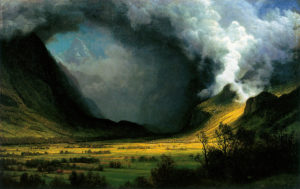 This article was written for L’Anticapitaliste, the weekly newspaper of the New Anticapitalist Party (NPA) of France.
This article was written for L’Anticapitaliste, the weekly newspaper of the New Anticapitalist Party (NPA) of France.
COVID-19 is now in all U.S. states with 530,026 cases and 20,614 deaths (as of April 12). Statistics suggest that the virus has peaked for now. The debate today revolves around how to restart the economy without triggering a second wave. Electoral politics are on hold. Class struggle is beginning to grow.
The virus shows the economic and social inequalities in racial disparities. In Chicago black people make 32 percent of the population, but they make up 72 percent of the coronavirus deaths, and statistics are similar in several other cities. In New York both blacks and Latinos are dying at twice the rate of whites. This is largely due to underlying conditions–high blood pressure, diabetes, and respiratory disease–but also to lack of health care and overcrowded housing.
American racism appears everywhere in this crisis. The United States has virtually closed the southern border to migrants and Latin American refugees seeking asylum in the United States have not been admitted and find themselves waiting in overcrowded camps in Mexico where the coronavirus is spreading. Asian Americans have experienced verbal abuse and violent attacks as the bearers of what Trump called the “Chinese virus.”
There are now officially 17 million unemployed—more than the Great Recession’s peak of 14.7 million in June 2009. While the jobless will receive state unemployment payments plus $600 until July 31, in the United States the unemployed also generally lose also their health insurance. Many of the unemployed have no food and have turned to food banks. Throughout the country there are lines of cars miles long where desperate families wait to get a box or two of groceries.
President Trump, the Republican Party, and some businesses want to get workers back on the job, even it means putting their health at risk. Dr. Robert Redfield, director of the the Centers for Disease Control and Prevention (CDC), speaking at the White House, said last week that essential employees–janitors, housekeeping workers, workers in food and agriculture, critical manufacturing, information technology, transportation, energy, and government facilities–who had been exposed to confirmed or suspected cases of Covid-19 could return to work if they were not experiencing symptoms. Some health professionals criticized the directive saying that it violated the CDC’s own standards and would endanger workers.
The deep economic recession has led to a fiscal crisis, since closed businesses don’t pay taxes to city and state governments. Already many U.S. states and cities have begun to propose budget cuts, ironically often cuts to sanitation, health, transportation, and education. New York City plans to cut 1.3 billion, some $264 million of that from education. The state of Colorado plans to cut $3 billion. The cuts in city and state budgets will lead to the layoff of tens of thousands more workers.
The working class response to the crisis has become more serious. Workers have carried out 70 wildcat strikes in a variety of industries in several states and cities. Unions such as the Service Employees (SEIU) and the New York Nurses (NYSNA) among others have become involved in organizing workplaces protests over health and safety. Labor Notes, the labor education center, has called for a National Health Care Day of Action on April 15 to encourage such protests. The United Electrical Workers Union (UE) called on the labor movement to take responsibility to organize workers and lead the fight.
Coronavirus led state governments to close down election rallies and even postpone the elections themselves. Bernie Sanders, the self-proclaimed “democratic socialist,” seeing no way to win, withdrew from the Democratic Party primary election. Joe Biden, a neoliberal, who won most delegates, now becomes the party’s presumptive nominee. In an attempt to appeal to Sanders’ supporters he is adopting reforms such as lowering Medicare eligibility from 65 to 60 and forgiving college debt of students from low-income and middle families.
The Democratic Socialists of America, which had been heavily involved in the Sanders’ campaign, has pledged to continue to fight for Sanders program: a Green New Deal, Medicare for all, and free college education. DSA says it is running state and local candidates and will be involved in all aspects of the labor and social movements fighting for public health and economic justice in the midst of the crisis.


Leave a Reply